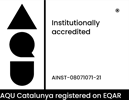

From Prediction to Action: Modern Prescriptive Analytics
How to turn predictions into optimal, real-world actions.
Course overview
Data-driven decision-making increasingly relies on three pillars: descriptive analytics to understand what has happened, predictive analytics to anticipate what will happen, and prescriptive analytics to determine what should be done. While advances in machine learning have made descriptive and predictive tools widely accessible, many analysts still face the crucial question: “Now what?” How to turn predictions into optimal, real-world actions.
This course bridges that gap by introducing the foundations of prescriptive analytics and the “art” of mathematical modelling. Through practical examples, from allocating healthcare budgets to routing delivery fleets or planning electricity purchases, participants learn how prescriptive models transform predictions into effective decisions. The course also demonstrates how integrating predictive and prescriptive methods enhances both: optimization models become more powerful when fed with forecasted inputs, and predictive models gain real-world relevance when tied to decision pipelines.
Designed for analysts, policymakers, researchers, and professionals across sectors, this course provides the tools to build customized prescriptive solutions and create end-to-end analytics pipelines that connect data, forecasts, and decisions to deliver measurable impact.
Faculty
Who is this course for?
This course has been designed for:
- Analytics professionals (data analysts, data scientists, product analysts), technical managers, and consultants in the private sector
- Analytics professionals, consultants, and decision-makers in the public sector
- Graduate students in economics and econometrics who want to complement their analytical toolset with mathematical modelling techniques
- Graduate students in statistics, machine learning, and artificial intelligence who want to learn mathematical modelling and integrate predictive models with prescriptive optimisation models
- Graduate students and post-docs in operational research who want to learn how to integrate optimisation models with statistical and machine learning models
Learning outcomes
By the end of the course, participants will be able to:
-
Distinguish between descriptive, predictive, and prescriptive analytics, and understand how they complement one another in real-world decision-making
-
Translate insights from statistical and machine learning models into actionable, optimized decisions using prescriptive analytics
-
Formulate mathematical models that address real-world problems such as resource allocation, routing, and energy procurement
-
Integrate predictive outputs (e.g., forecasts from regression, tree-based models, or neural networks) into prescriptive optimization frameworks
-
Develop tailored prescriptive models, recognizing why such models must often be custom-built rather than standardized
-
Build end-to-end analytics pipelines that connect data analysis, forecasting, and optimization to deliver measurable policy, operational, or managerial impact
Key topics for this Predictive Analytics course
Here is a course outline of what you will cover.
Introduction to Mathematical Modeling
-
Learn how to translate real-world problems into precise mathematical formulations
-
Build models from written descriptions and convert them into executable computer code
-
Solve models to obtain optimal solutions through hands-on examples
Prescriptive Models
-
Explore core optimization models using continuous decision variables
-
Extend these models by incorporating integer and binary variables to capture more complex decisions
-
Use practical examples to illustrate how binary variables significantly expand modeling capabilities
Refresher on Predictive (Machine Learning) Regression Methods
-
Review key regression techniques, including OLS and tree-based models (regression trees, gradient boosting, random forests)
-
Understand how predictive models generate inputs for decision-making frameworks
Integrating Predictive and Prescriptive Approaches
-
Learn how to incorporate predicted (non-deterministic) inputs into optimization models
-
Combine machine learning and mathematical programming to solve data-driven decision problems
List of References
Students will be provided with lecture notes. If you wish to refresh or deepen your knowledge of mathematical modeling before the course, the following text could be useful:
Books
- Model Building in Mathematical Programming, 5th Ed., H. Paul Williams, Wiley.
Software / Hardware
- Google Colab
- Participants must bring their own laptop to participate fully in the course
Why join our Summer School?
All BSE Summer courses are taught to the same high standard as our Master’s programs. Join us to:
Network with like-minded peers
Study in vibrant Barcelona
Learn from world-renowned faculty
Admissions and Requirements
It is the participant’s responsibility to ensure they meet the admissions criteria.
Requirements
Summer School applicants normally demonstrate one or more of the following:
- A strong background in Economics or a field closely related to the course topic (Statistics, Law, etc.)
- Postgraduate degree or current Master’s/PhD studies related to the course topic
- Relevant professional experience
Requirements for
-
Basic understanding of statistics, including working knowledge of linear regression (OLS)
-
Familiarity with the core ideas behind Decision Trees is helpful
-
Basic proficiency in Python, as it will be used in the lab sessions
Schedule
Here is your schedule for this edition of BSE Data Science Summer School, From Prediction to Action: Modern Prescriptive Analytics:
Credit Transfers (ECTS)
To be eligible for credit transfer, students must complete a final project.
Students must complete a coding exercise in Python, using a Colab Notebook. It will involve solving an optimisation model with Gurobi, when some of the model’s inputs are stochastic and must be predicted using a machine learning method.
Consult the Summer School Admissions page for more information about this option.
Certificate of Attendance
Participants who attend more than 80% of the course will receive a Certificate of Attendance, free of charge.
Fees
Multiple course discounts are available, see more information about available discounts. Fees for courses in other Summer School programs may vary.
* Reduced Fee applies for PhD or Master’s students, Alumni of BSE Master’s programs, and participants who are unemployed.
FAQ
Need more information? Check out our most commonly asked questions or contact our Admissions Team.
Is accommodation included in the course fee?
Unfortunately, accommodation is not included in the course fee. Participants are responsible for finding accommodation.
Are the sessions recorded?
Sessions will NOT be recorded; however, the materials provided by the professor will be available for a month after the course has finished.
How much does each Summer School course cost?
Fees for each course may vary. Please consult each course page for accurate information.
Are there any discounts available?
Yes, BSE offers a variety of discounts on its Summer School courses. See more information about available discounts or request a personalized discount quote by email.
Can I take more than one course?
Yes! you can combine any of the Summer School courses (schedule permitting). See the full course calendar.
Are there any evening activities during the course?
Yes, a social dinner is held once a week for all participants, it is free to attend.
Mix and match your summer courses!
Remember that you can combine this program with courses in any of the other BSE Summer School programs (schedule permitting). Maximise your learning this summer and take advantage of our multiple-course discount.
Economics. All rights reserved.






